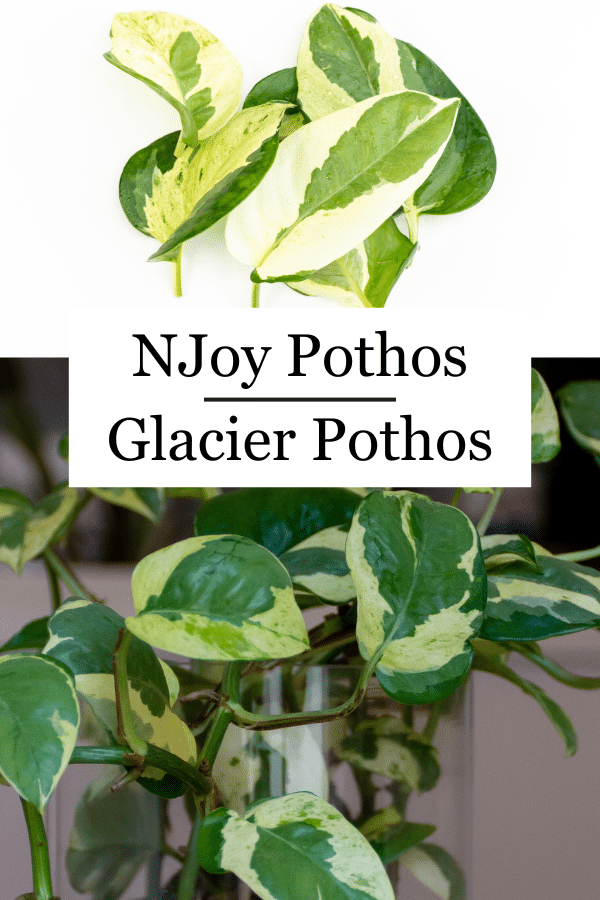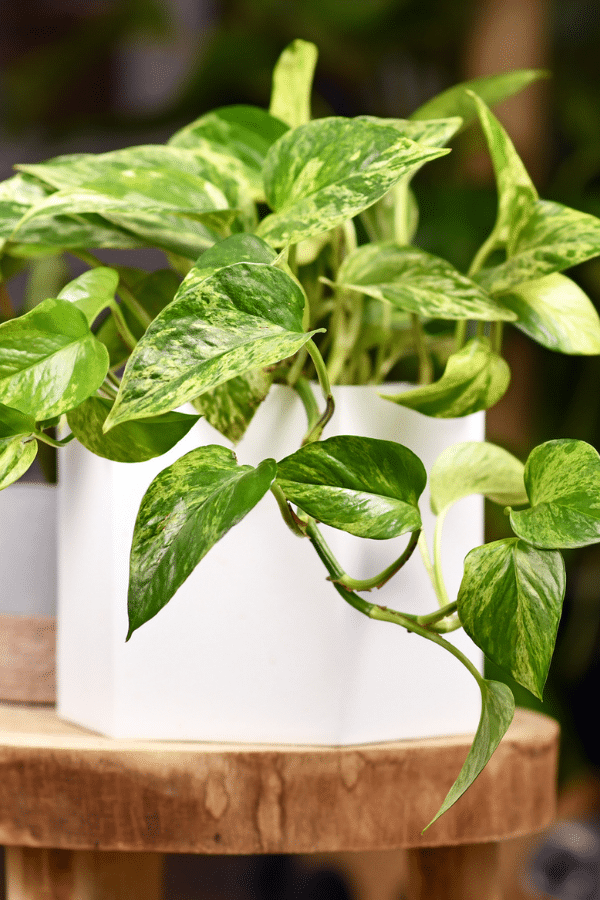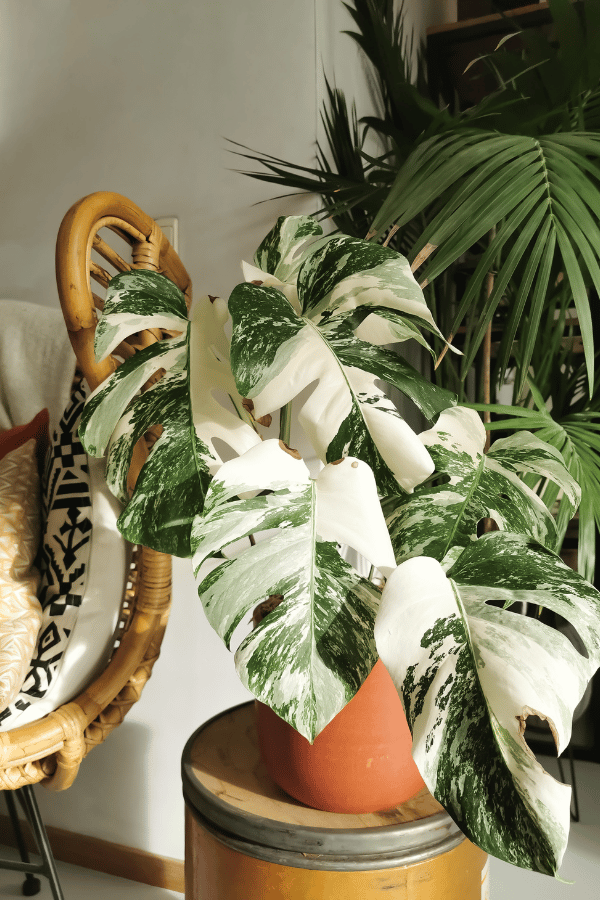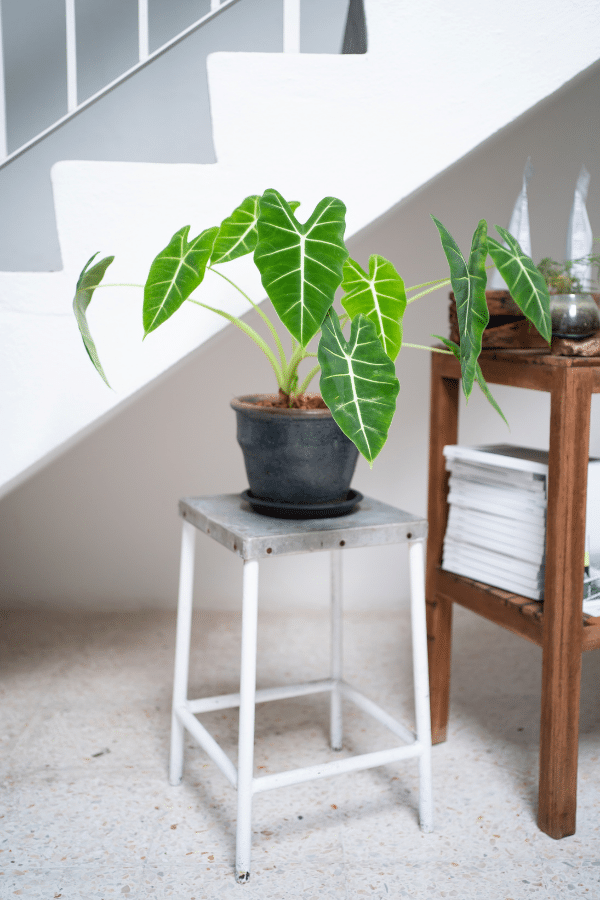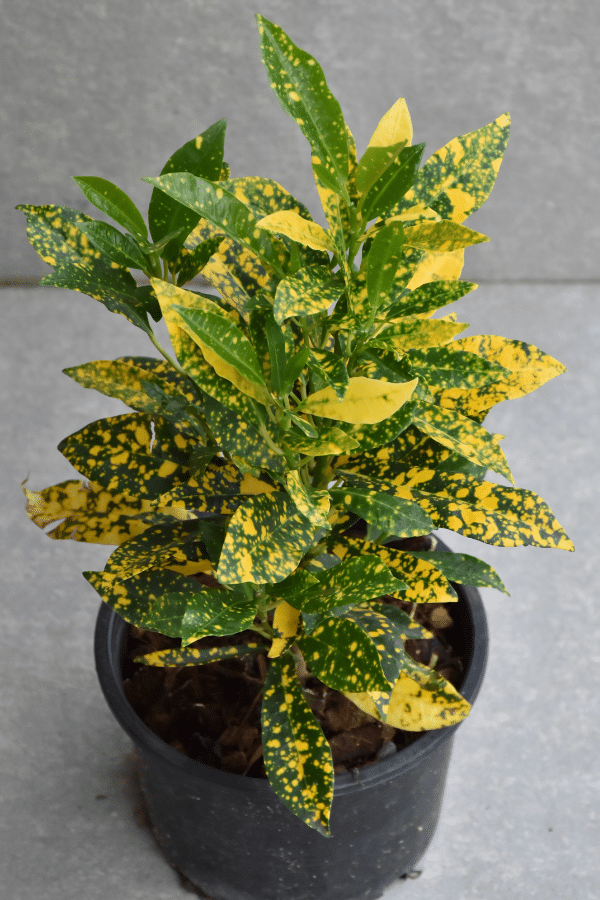Watermelon Peperomia Argyreia
Scientific Name: Peperomia Argyreia
Common Name: Watermelon Peperomia, Watermelon Begonia
Watermelon Peperomia care requires little attention and is such an easy plant to care for. Growing to be only around one foot tall, this plant makes for a great spot on an end table or desk.
To give this Peperomia plant the best care, it requires high-quality soil, allowing the topsoil to dry out between waterings, give it bright filtered sunlight, and average household humidity and temperature levels.
Quick Care Overview
| Common Name | Watermelon Peperomia, Watermelon Begonia |
| Scientific Name | Peperomia Argyreia |
| Family | Piperaceae |
| Origin | South America |
| Growth Rate | Slow |
| Identification | Waxy leaves that resemble a watermelon rind as its leaf pattern |
| Height | Up to 1 foot tall |
| Soil | 1:1 ratio of peat moss to perlite |
| Water | Allow top two inches of soil to dry out before watering |
| Temperature | 55-80F |
| Sunlight | Bright indirect light |
| Toxic to Cats & Dogs | No |
| Toxic to Humans | No |
| Pests | Mealybugs, spider mites, whitefly |
| Diseases | Root rot |
Below we will dive deep into this Watermelon Peperomia care guide.
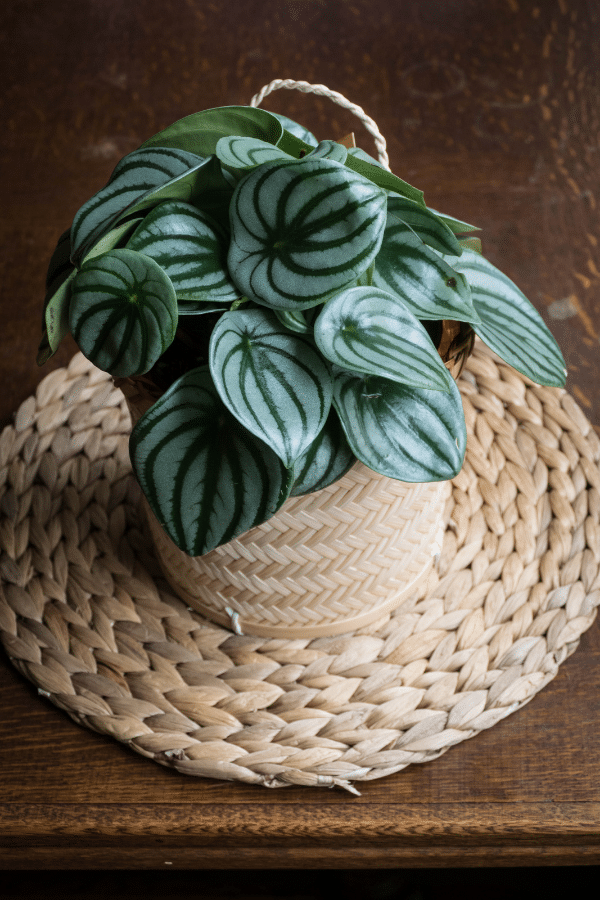
Watermelon Peperomia Argyreia History
A stunning plant with watermelon-patterned foliage has taken the market by storm. It has become exceedingly popular amongst home gardeners. The Watermelon Peperomia, or Peperomia Argyreia, is a compact, colorful, South American native adapted exceptionally well to indoor cultivation. These cute plants even have a shimmery, glistening appearance, especially when caught in the sunlight.
Watermelon Peperomia Argyreia Identification
Classified as a semi-succulent, this Peperomia is a slow-growing, compact plant with waxy green leaves with patterning that resembles the rind of a watermelon.
Watermelon Peperomia Argyreia Growth Facts
Slow-growing and compact, this Peperomia makes the perfect plant for a desk, bookshelf, or other small space.
How Big Does a Watermelon Peperomia Argyreia Get?
Peperomia Argyreia will grow to be about 1 foot tall and 8 inches wide.

Watermelon Peperomia Argyreia Care
Watermelon Peperomia care is exceptionally easy, making them a good choice for beginners.
Watermelon Peperomia Argyreia Soil
As these Peperomia are not picky, they will perform well in most standard potting mixes, as long as there is proper drainage. It is essential to avoid dry soil mixes such as those suited for cacti and succulents. This plant having tropic origins, prefers to grow in a growing medium that retains some moisture. An excellent growing medium is a 1:1 mixture of peat moss or coco coir to perlite.
Watermelon Peperomia Argyreia Fertilizer
Peperomia Argyreia will benefit from a regular bi-monthly to monthly feeding during to warm growing season from a balanced liquid fertilizer. Ensure that you follow all label instructions and do not overfeed, as this will lead to issues, such as chemical burn. This plant should not be fed in winter.
Watermelon Peperomia Argyreia Watering
Best Watermelon Peperomia care should be allowed to dry out a couple of inches before rewatering. Like many indoor houseplants, this Peperomia is sensitive to being either underwatered or overwatered. It is pertinent that you do not allow this plant to sit in excess water as this may lead to issues such as root rot.
Watermelon Peperomia Argyreia Light Requirements
This Peperomia prefers to have medium to bright indirect light but should not be exposed to direct sunlight. Their leaves are especially prone to sun scorch. However, it should be kept in mind that the leaves will be smaller and leggier if the Watermelon Peperomia doesn’t receive enough light.
Watermelon Peperomia Argyreia Temperature & Humidity
Being a tropical plant, the Watermelon Peperomia prefers to grow in warm, slightly humid conditions. However, these plants are incredibly adaptable and will tolerate average household temperatures and humidity. The warmest this plant likes to get is 80F while you shouldn’t ever let this plant get below 55F. Ensure that your Peperomia is not placed near heaters, AC units, drafts, or cold windows. Give this plant humidity levels ranging from 40-50%.
Repotting Watermelon Peperomia Argyreia
This plant may never need to be repotted as it is incredibly slow-growing, compact, prefers to be root bound, and does not like to be transplanted. However, if your Peperomia has no room to grow and its tubers are seen sticking out of the container’s drainage holes, you may repot in a container that is one size bigger. At the most, repotting should only be done every 2-3 years. It would be best if you only repotted your Peperomia Argyreia when necessary.
Watermelon Peperomia Argyreia Maintenance & Pruning
Peperomia Argyreia doesn’t require pruning or maintenance very often at all, making it a perfect plant for beginners. When repotting, or as needed, remove dead, damaged, or discolored foliage, and excess growth may be trimmed back. Use clean, sterilized shears for pruning.

Watermelon Peperomia Argyreia Propagation
The Watermelon Peperomia is so easy to propagate that they are sometimes even referred to as “friendship plants,” as they are easy to share with friends. All propagation should be done in the warm growing season of spring or summer. Propagation may be done by either leaf cuttings or root division. Root division is an incredibly easy method of propagation that only requires that you remove the offshoots, or pups, away from the mother plant and plant them into their own container. After planting, water your newly potted plant thoroughly and place it in indirect light. Keep consistently moist for a couple of weeks until new growth is seen; then, regular watering may be resumed.
Watermelon Peperomia Argyreia Toxicity
Considered non-toxic, Watermelon Peperomia is completely pet and kid friendly.
Toxicity to Humans
This plant is considered non-toxic to humans, though it should not be consumed as it may cause digestive upset.
Toxicity to Cats & Dogs
Luckily this plant is considered non-toxic to pets and is safe to have around your cat or dog.
Watermelon Peperomia Argyreia Problems
Watermelon Peperomia Argyreia Leaves Turning Yellow
The number one cause of yellow foliage on a Watermelon Peperomia is due to overwatering. However, pests may also cause yellowing of the leaves.
Watermelon Peperomia Argyreia Leaves Turning Brown
Your Peperomia’s foliage may turn brown due to environmental stress, lack of humidity, overwatering, or pest damage. Carefully evaluate your plant’s environment and moisture levels and look for any sign of pests to determine what may be causing your Peperomia stress.
Watermelon Peperomia Argyreia Diseases
The most common plant disease issue to affect this Peperomia is a bacterial or fungal infection due to overwatering. Ensure that your plant has ample drainage and that it is not sitting in standing excess water within the plant’s tray.
Watermelon Peperomia Argyreia Pests
Although not very common, occasionally, your Peperomia may be affected by indoor house pests such as spider mites, whiteflies, and mealybugs. These bugs may be treated with a pesticide such as insecticidal soap or neem oil. Ensure that you follow all label instructions.
FAQ
Can Watermelon Peperomia Live Outside?
Watermelon Peperomia does not do well with temperatures below 55F. It can be placed outside for summer, but be sure to bring it inside for the fall, winter, and spring.
Does Watermelon Peperomia Like Humidity?
The ideal humidity level for Watermelon Peperomia is 40-50%, around average household humidity.
Should I Mist Watermelon Peperomia?
You can mist Watermelon Peperomia, but to increase the overall humidity of the plant, add a pebble tray or humidifier to bring extra humidity to the plant faster.
Does Watermelon Peperomia Like the Sun?
Watermelon Peperomia needs bright light to grow well. Direct sunlight should be avoided with this plant as it can easily burn the leaves.
Where Do You Put Watermelon Peperomia?
Requiring indirect light, it’s best to place Watermelon Peperomia near an east-facing window that has some filter such as sheer curtains to receive the light it needs.
How Do You Make Watermelon Peperomia Bushy?
Provide your Peperomia with adequate lighting and regular waterings to create a bushy effect. If the plant has become leggy, you can prune the plant back to make it grow bushy again.

